Top Crypto Trading Platforms in 2025







%201.svg)
%201.svg)
Big news: We’re cranking up the heat on AI-driven crypto analytics with the launch of the Token Metrics API and our official SDK (Software Development Kit). This isn’t just an upgrade – it's a quantum leap, giving traders, hedge funds, developers, and institutions direct access to cutting-edge market intelligence, trading signals, and predictive analytics.
Crypto markets move fast, and having real-time, AI-powered insights can be the difference between catching the next big trend or getting left behind. Until now, traders and quants have been wrestling with scattered data, delayed reporting, and a lack of truly predictive analytics. Not anymore.
The Token Metrics API delivers 32+ high-performance endpoints packed with powerful AI-driven insights right into your lap, including:
Getting started with the Token Metrics API is simple:
At Token Metrics, we believe data should be decentralized, predictive, and actionable.
The Token Metrics API & SDK bring next-gen AI-powered crypto intelligence to anyone looking to trade smarter, build better, and stay ahead of the curve. With our official SDK, developers can plug these insights into their own trading bots, dashboards, and research tools – no need to reinvent the wheel.
%201.svg)
%201.svg)
Most traders see price—quants see probabilities. The Quantmetrics API turns raw performance into risk-adjusted stats like Sharpe, Sortino, volatility, drawdown, and CAGR so you can compare tokens objectively and build smarter bots and dashboards. In minutes, you’ll query /v2/quantmetrics, render a clear performance snapshot, and ship a feature that customers trust. Start by grabbing your key at Get API Key, Run Hello-TM to verify your first call, then Clone a Template to go live fast.
Risk-adjusted truth beats hype. Price alone hides tail risk and whipsaws. Quantmetrics compresses edge, risk, and consistency into metrics that travel across assets and timeframes—so you can rank universes, size positions, and communicate performance like a professional.
A clean REST schema, predictable latency, and easy auth mean you can plug Sharpe/Sortino into bots, dashboards, and screeners without maintaining your own analytics pipeline. Pair with caching and batching to serve fast pages at scale.
The Quant Metrics cURL request is located in the top right of the API Reference, allowing you to easily integrate it with your application.
Build Smarter Crypto Apps & AI Agents with Token Metrics
Token Metrics provides real-time prices, trading signals, and on-chain insights all from one powerful API. Grab a Free API Key
Quantmetrics computes risk-adjusted performance over a chosen lookback (e.g., 30d, 90d, 1y). You’ll receive a JSON snapshot with core statistics:
Call /v2/quantmetrics?symbol=<ASSET>&window=<LOOKBACK> to fetch the current snapshot. For dashboards spanning many tokens, batch symbols and apply short-TTL caching. If you generate alerts (e.g., “Sharpe crossed 1.5”), run a scheduled job and queue notifications to avoid bursty polling.
A JSON snapshot of risk-adjusted metrics (e.g., Sharpe, Sortino, volatility, max drawdown, CAGR) for a symbol and lookback window—ideal for ranking, sizing, and dashboards.
Responses are engineered for predictable latency. For heavy UI usage, add short-TTL caching and batch requests; for alerts, use scheduled jobs or webhooks where available.
Yes—many quants size inversely to volatility or require Sharpe ≥ X to trade. Always backtest and paper-trade before going live; past results are illustrative, not guarantees.
Short windows (30–90d) adapt faster but are noisier; longer windows (6–12m) are steadier but slower to react. Offer users a toggle and cache each window.
REST is straightforward (JS/Python above). Docs include quickstarts, Postman collections, and templates—start with Run Hello-TM.
Dashboards usually use cached polling. For threshold alerts (e.g., Sharpe crosses 1.0), run scheduled jobs and queue notifications to keep usage smooth and idempotent.
Begin free and scale up. See API plans for rate limits and enterprise SLA options.
All information provided in this blog is for educational purposes only. It is not intended as financial advice. Users should perform their own research and consult with licensed professionals before making any investment or trading decisions.
%201.svg)
%201.svg)
Timing makes or breaks every trade. The crypto trading signals API from Token Metrics lets you surface bullish and bearish calls directly in your product—no spreadsheet wrangling, no chart gymnastics. In this guide, you’ll hit the /v2/trading-signals endpoint, display actionable signals on a token (e.g., SOL, BTC, ETH), and ship a conversion-ready feature for bots, dashboards, or Discord. Start by creating a key on Get API Key, then Run Hello-TM and Clone a Template to go live fast.
Action over analysis paralysis. Traders don’t need more lines on a chart—they need an opinionated call they can automate. The trading signals API compresses technical momentum and regime reads into Bullish/Bearish events you can rank, alert on, and route into strategies.
Built for dev speed and reliability. A clean schema, predictable performance, and straightforward auth make it easy to wire signals into bots, dashboards, and community tools. Pair with short-TTL caching or webhooks to minimize polling and keep latency low.
You can find the cURL request for Crypto Trading Signals in the top right corner of the API Reference. Use it to access the latest signals!
Trading Signals distill model evidence (e.g., momentum regimes and pattern detections) into Bullish or Bearish calls with metadata such as confidence/score and timestamp. You request /v2/trading-signals?symbol=<ASSET> and render the most recent event, or a small history, in your UI.
For intraday workflows, use /v2/hourly-trading-signals to update positions or alerts more frequently. Dashboards typically use short-TTL caching or batched fetches; headless bots lean on webhooks, queues, or short polling with backoff to avoid spiky API usage.
A JSON payload with the latest Bullish/Bearish call for a symbol, typically including a confidence/score and generated_at timestamp. You can render the latest call or a recent history for context.
Signals are designed for timely, programmatic use with predictable latency. For faster cycles, use /v2/hourly-trading-signals. Add caching and queues/webhooks to reduce round-trips.
Yes—many developers do. A common pattern is: Signals → candidate entry, Support/Resistance → stop/targets, Quantmetrics → risk sizing. Always backtest and paper-trade before going live.
Backtests are illustrative, not guarantees. Treat signals as one input in a broader framework with risk controls. Evaluate hit rates and drawdowns on your universe/timeframe.
You can integrate via REST using JavaScript and Python snippets above. The docs include quickstarts, Postman collections, and templates—start with Run Hello-TM.
Dashboards often use cached polling. For bots/alerts, prefer webhooks or scheduled jobs and keep retries idempotent to avoid duplicate trades or messages.
Begin free and scale as you grow. See API plans for allowances; enterprise SLAs and support are available.
%201.svg)
%201.svg)
Most traders chase price action; Fundamental Grade Crypto API helps you see the business behind the token—community traction, tokenomics design, exchange presence, VC signals, and DeFi health—consolidated into one score you can query in code. In a few minutes, you’ll fetch Fundamental Grade, render it in your product, and ship a due-diligence UX that drives trust. Start by grabbing your key at the Get API Key page, Run Hello-TM to verify your first call, then Clone a Template to go live fast.
A minimal script to fetch Fundamental Grade from /v2/fundamental-grade for any symbol (e.g., BTC).
Beyond price, toward quality. Markets are noisy—hype rises and fades. Fundamental Grade consolidates hard-to-track signals (community growth, token distribution, liquidity venues, investor quality, DeFi integrations) into a clear, comparable score. You get a fast “is this worth time and capital?” answer for screening, allocation, and monitoring.
Build trust into your product. Whether you run an investor terminal, exchange research tab, or a portfolio tool, Token Metrics discovery helps users justify positions. Pair it with TM Grade or Quantmetrics for a balanced picture: what to buy (fundamentals) and when to act (signals/levels).
The Fundamental Grade is easily accessible in the top right of the API Reference. Grab the cURL request for seamless access!
Watch the demo: VIDEO_URL_HERE. Compare plans: Scale confidently with API plans.
A JSON payload with the overall score/grade plus component scores (e.g., community, tokenomics, exchange presence, VC backing, DeFi health) and timestamps. Use the overall grade for ranking and component scores for explanations.
The API is engineered for predictable latency. For high-traffic dashboards, add short-TTL caching and batch requests; for alerts, use jobs/webhooks to minimize round-trips.
Yes. A common pattern is Fundamental Grade for quality filter + TM Grade for technical/sentiment context + Trading Signals for timing and Support/Resistance for risk placement.
It’s an opinionated synthesis of multiple inputs—not financial advice. Historical studies can inform usage, but past performance doesn’t guarantee future results. Always layer risk management and testing.
You can use REST directly (see JS/Python above). The docs include quickstarts, Postman, and ready-to-clone templates—start with Run Hello-TM.
For UI pages, cached polling works well. For event-style notifications (upgrades/downgrades), prefer webhooks or scheduled jobs to avoid spiky traffic.
Begin free and scale as you grow. See API plans for allowances; enterprise SLAs and support are available—contact us.
.png)
%201.svg)
%201.svg)
As the popularity of cryptocurrencies continues to grow in 2025, more people are seeking safe and secure ways to manage their digital assets. The first step in your crypto journey? Creating a crypto wallet.
In this guide, we’ll explain:
A crypto wallet is a digital tool that allows you to store, receive, and send cryptocurrencies like Bitcoin, Ethereum, and thousands of altcoins. Instead of holding physical money, it stores your private and public keys, giving you access to your blockchain assets.
Whether you're buying Bitcoin for the first time or diving into DeFi tokens, you'll need a crypto wallet to safely store and manage your coins.

Hot wallets are easier to set up and use, while cold wallets offer greater protection against hacks and malware.
Step 1: Download the App or Browser Extension
Step 2: Create a New Wallet
Step 3: Backup Your Recovery Phrase
Step 4: Confirm Your Recovery Phrase
Step 5: Wallet is Ready
✅ Pro Tip: Connect your wallet to Token Metrics to explore trading signals, moonshots, and AI analytics directly.
Step 1: Buy a Ledger or Trezor device
Step 2: Install Wallet Software
Step 3: Set Up Device and PIN
Step 4: Write Down Your Recovery Phrase
Step 5: Start Receiving Crypto
✅ Pro Tip: Use your cold wallet to store moonshots and long-term assets, then analyze performance using Token Metrics Portfolio tools.
While Token Metrics doesn't create wallets, it integrates seamlessly with your Web3 wallets to help you maximize profits and minimize risks.
Once your wallet is set up, use Token Metrics to find top-rated tokens across risk levels, market caps, and sectors.

Explore early-stage tokens with massive upside using the Moonshots tab—only available to Premium members.

Set up alerts for price, investor grade, or bullish/bearish signals—and receive them directly to your connected wallet’s contact info.

Monitor wallet performance across tokens with a real-time dashboard powered by on-chain data.
Different wallets support different blockchains, so always check compatibility before sending assets.

Q: Is creating a crypto wallet free?
Yes, most wallet apps like MetaMask or Trust Wallet are free.
Q: Can I create multiple wallets?
Absolutely. Many investors use different wallets for different purposes (e.g., trading, staking, savings).
Q: What happens if I lose my recovery phrase?
You lose access to your wallet permanently. Always store it securely.
Q: Do I need a wallet to use Token Metrics?
No, but connecting a wallet enhances your experience by allowing you to monitor portfolios, moonshots, and alerts in real time.

Creating a crypto wallet is your gateway to the decentralized world of digital finance. Whether you’re a seasoned trader or a beginner buying your first token, having a secure wallet is non-negotiable.
By choosing the right wallet (hot or cold), securing your keys, and combining it with powerful tools like Token Metrics, you can build a smart, secure, and profitable crypto journey.
%201%20(1).png)
%201.svg)
%201.svg)
Cryptocurrency offers unmatched freedom, but with that freedom comes responsibility—especially when it comes to how to store cryptocurrency securely. Unlike traditional banking, crypto is self-custodied. If you lose access to your wallet, your funds are gone forever.
This guide explains everything you need to know about storing crypto in 2025, including:
When you buy crypto—whether it’s Bitcoin, Ethereum, or a promising moonshot altcoin—you receive private keys that give you access to your funds. Anyone with that key can spend your coins.
That’s why safe storage is critical. Without it, your assets are vulnerable to:
You are your own bank, and your security strategy is your vault.
A crypto wallet is a digital tool that stores your private and public keys. It lets you send, receive, and manage your crypto.
There are two main types:
Let’s explore both.
Hot wallets are always online, making them easy to use for trading, DeFi, or daily transactions.
Cold wallets are offline storage solutions, ideal for long-term investors or large holdings.
Managed by exchanges (e.g., Binance, Coinbase). You don’t own the private keys.
Pros:
Cons:
You own the keys. Wallets like MetaMask, Trust Wallet, or hardware devices.
Pros:
Cons:
Tip: Token Metrics recommends non-custodial wallets for storing long-term holdings and moonshot tokens.
Token Metrics is an AI-powered crypto research and trading platform trusted by thousands of investors. While it doesn’t store your crypto directly, it helps you manage risk and store assets wisely by:

Token Metrics gives you AI-generated grades for tokens—helping you avoid scams and invest in credible projects worth storing long-term.
You can explore tokens, assess moonshots, and initiate trades directly from your connected Web3 wallet without leaving the platform.

Token Metrics allows you to track wallets and portfolio performance without requiring access to your private keys.

Through webinars, blog content, and investor resources, Token Metrics educates users on how to safely store their crypto in hot and cold wallets.
Your long-term Bitcoin, Ethereum, and moonshot tokens should live on a hardware wallet, not on an exchange.
Do NOT keep your recovery phrase in Google Docs or your phone. Use metal seed phrase storage or write it down and lock it in a safe.
Diversify storage:
Phishing is the #1 crypto threat. Double-check URLs, don’t sign unknown transactions, and avoid shady browser extensions.
Use platforms like Token Metrics Alerts or Etherscan to track your wallet and get notified of suspicious activity.

Storing cryptocurrency securely is just as important as choosing the right tokens to invest in. Whether you’re a day trader, long-term investor, or moonshot hunter, knowing when and where to store your crypto is key to protecting your wealth.
In 2025, the best strategy combines:
When you store your crypto properly, you don’t just protect your assets—you gain peace of mind.
.png)
%201.svg)
%201.svg)
In today’s fast-paced crypto world, real-time data isn’t a luxury—it’s a necessity. For traders, analysts, and developers, being able to access live, actionable insights can mean the difference between profit and loss. That’s why the integration of the Token Metrics Crypto Data API with Dune is a game-changer for anyone seeking to create live dashboards backed by intelligent trading data.
In this post, we’ll walk through how to use this top crypto API to build dynamic dashboards on Dune. Whether you’re tracking bullish signals, backtesting trading strategies, or identifying top-performing tokens, this integration makes it possible—without any paid license.
Let’s dive into how you can use the best free crypto API available today to transform your trading.
The Token Metrics Crypto Data API is a developer-focused gateway to powerful, AI-driven crypto data. It’s one of the top crypto APIs in 2025, giving you access to:
This API is used by both professional quant traders and beginners seeking to automate insights. And the best part? Token Metrics provides free crypto API access to selected datasets, allowing you to create powerful dashboards without spending a dime.
Dune is a blockchain analytics platform that allows you to write SQL queries and create dashboards using on-chain and off-chain data. Now that Token Metrics datasets are available on Dune, you can combine the best of both worlds:
This integration unlocks a whole new level of transparency and utility for crypto analysts, portfolio managers, and DeFi enthusiasts.
To begin, create a free Dune account. Once logged in, navigate to the Token Metrics datasets. These are publicly accessible and updated regularly. You’ll find tables for:
Start a new SQL query and choose the dataset you want to explore. Here’s what you’ll find in the trading signals table:

Step-by-Step: Creating an Actionable Dashboard with Token Metrics Data
Write a SQL query to calculate the average return of trading vs. holding strategies. For example:

This gives you the alpha—how much better the Token Metrics strategy performs compared to just HODLing.
In one real example, the average signal return across all tokens was 1630%, while holding returned just 400%. That’s a 12X improvement powered by this top crypto API.
Now let’s list tokens with the highest average alpha:

Tokens like BTC, ETH, BNB, and even newer ones like Virtuals stand out due to exceptional alpha performance.
The trader grade is a proprietary score from Token Metrics that predicts how favorable a token is for short-term traders.
Use a scatter plot to correlate trader grades with average alpha:
This helps you visually determine which tokens score high and offer exceptional returns—an essential tool for making actionable trading decisions.
Want to know which tokens are bullish right now? Here’s a query to find the most recent tokens flagged as bullish:

For example, on July 4th, tokens like BNB, XRP, and BTC were among the most recent bullish signals—perfect for immediate trade setups.
Once you’ve run your queries:
Your final product will be a real-time dashboard powered by the best crypto API, delivering insights that you—and your team—can act on instantly.
Here’s why Token Metrics stands out among other APIs:
Most APIs deliver raw data. Token Metrics provides curated signals, generated from machine learning models trained on market cycles, indicators, and price action.
Access unique indicators like trader grade and investor grade, unavailable anywhere else.
Use the API to backtest strategies. In the example shown, the AI strategy outperformed the market by over 1000X for some tokens.
Whether you're using Dune, Zapier, OpenAI, or Eliza OS, Token Metrics is easy to integrate and query—making it the top crypto API for developers and analysts alike.
The combination of Token Metrics’ intelligent data and Dune’s visualization tools puts immense power in your hands. Whether you’re tracking market trends, building bots, or guiding portfolio decisions, this integration gives you everything you need to trade smarter.
With free access to real-time trading signals, alpha comparisons, and powerful visualizations, Token Metrics proves why it's the best crypto API for today’s data-driven investor.
Ready to try it out?
👉 Explore the Free Crypto API
👉 Start Building on Dune
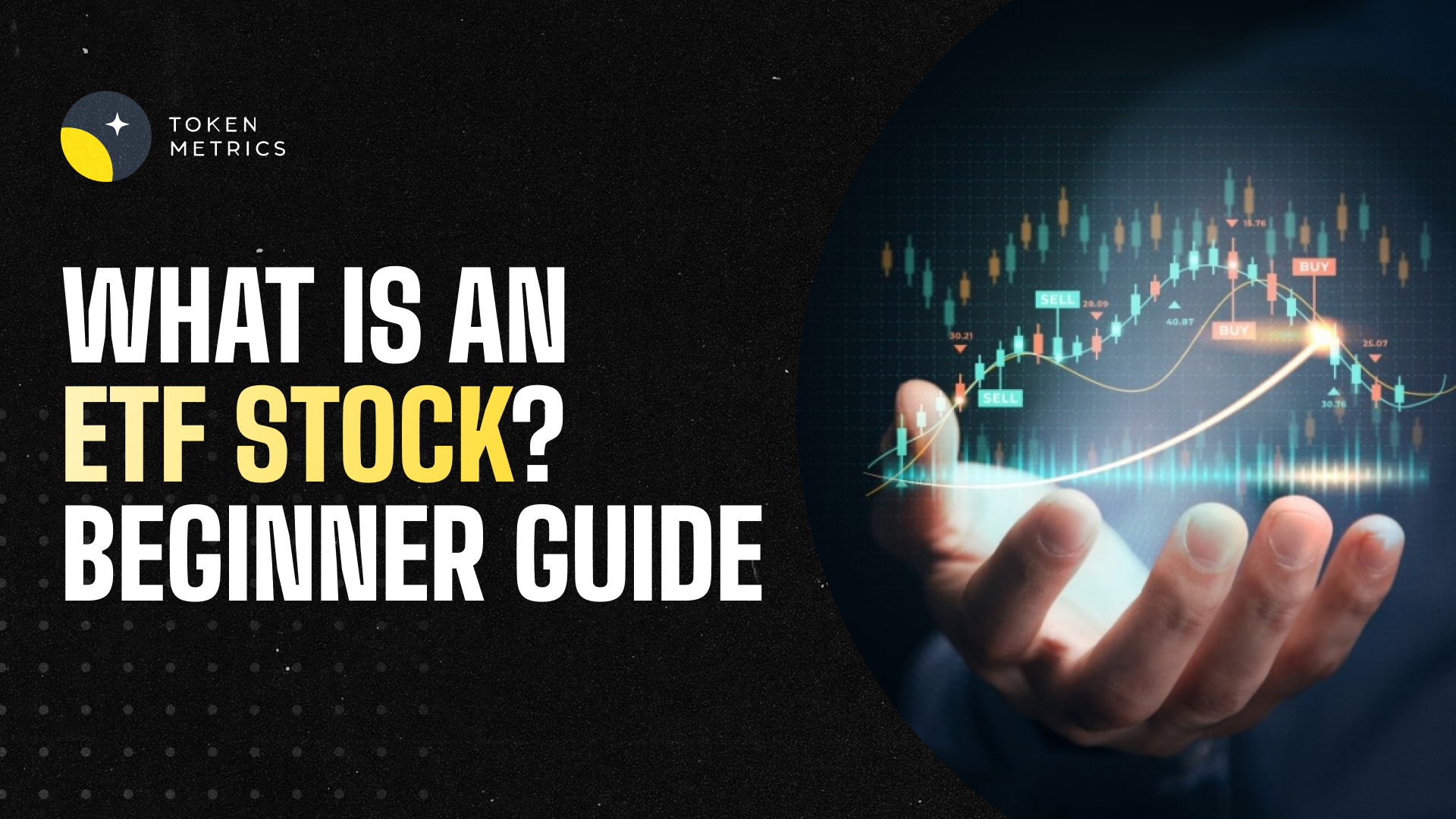
%201.svg)
%201.svg)
In today’s fast-moving financial markets, Exchange-Traded Funds, or ETF stocks, have emerged as one of the most popular investment vehicles for beginners and professionals alike. But what exactly is an ETF stock, how does it work, and why is it considered a smart way to invest?
This guide will walk you through everything you need to know about ETF stocks in 2025—including how they work, their benefits and risks, and how AI platforms like Token Metrics are changing the way people research and trade ETFs in both traditional and crypto markets.
An ETF stock refers to a share of an Exchange-Traded Fund—a type of investment fund that trades on stock exchanges, much like individual company stocks. Each ETF holds a basket of underlying assets such as:
When you buy an ETF stock, you’re buying a fractional share of the entire portfolio of assets held by that ETF.
ETF stocks work like this:
This model provides a liquid, transparent, and low-cost way for investors to gain diversified exposure to entire markets or sectors.
A good example is the SPDR S&P 500 ETF Trust (SPY), which tracks the performance of the S&P 500 index. When you buy a share of SPY, you gain exposure to 500 of the largest U.S. companies—without needing to buy each stock individually.
ETF stocks offer numerous advantages for investors in 2025:
Instead of buying individual assets, ETF stocks offer instant diversification by holding dozens or hundreds of securities in a single share.
ETFs are traded on exchanges, making them highly liquid. You can buy or sell them at market prices during normal trading hours.
ETFs typically have low expense ratios (as low as 0.03%), especially compared to mutual funds or actively managed portfolios.
Most ETFs disclose their holdings daily, giving investors a clear view into what they’re buying.
You can use ETFs for long-term investing, short-term trading, hedging, or generating income through dividends.
Despite their many benefits, ETF stocks do come with some risks:
ETF stocks are still subject to market volatility. If the underlying assets decline in value, so will the ETF.
Some ETFs may not perfectly replicate the performance of their index due to fees, slippage, or illiquid assets.
Because ETFs make it easy to invest, some investors may unknowingly become overexposed to a particular sector or strategy.
Not all ETFs are created equal. Low-volume ETFs may have wider bid-ask spreads, increasing trading costs.
In 2025, crypto ETF stocks have become a hot trend. These funds allow investors to gain exposure to digital assets without managing private keys, wallets, or blockchain protocols.
Types of crypto ETFs include:
Popular examples in 2025 include:
Crypto ETFs have opened the door for institutional and traditional investors to gain exposure to the crypto market in a regulated and simplified manner.
Whether you're interested in traditional ETF stocks or crypto ETFs, Token Metrics provides the AI-powered insights you need to make better investment decisions.
Token Metrics assigns each token or ETF a Trader Grade and Investor Grade based on price trends, volume, volatility, and technical strength—making it easy to spot outperformers.

AI-driven signals show when it’s time to buy or sell based on real-time metrics like ETF inflows, exchange balances, and market sentiment.

Get access to predictive models that estimate where Bitcoin, Ethereum, and major crypto ETFs are headed—based on 80+ factors.

Set custom alerts for ETF stock signals, price movements, or grade changes so you never miss an opportunity.

By combining ETF investing with Token Metrics’ AI analytics, you gain an informational edge in markets that move faster than ever.
Here’s a list of top-performing ETF stocks across traditional and crypto sectors:
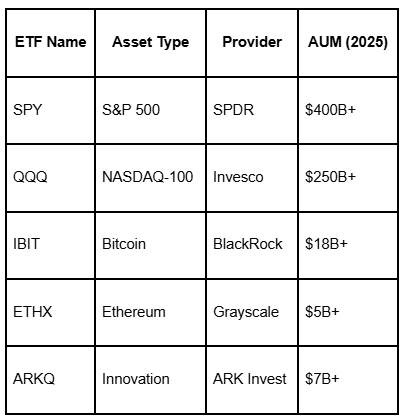
ETF stocks are a powerful investment tool in 2025, offering instant diversification, low fees, and easy access to traditional and crypto markets. Whether you're looking to build a retirement portfolio or ride the next Bitcoin rally, ETF stocks make it easier than ever to invest with confidence.
And with platforms like Token Metrics, you don’t need to guess your way through ETF trading. Use AI-driven insights, price predictions, and real-time data to get ahead of the curve—no matter what markets you trade.
.png)
%201.svg)
%201.svg)
The world of crypto investing is expanding at lightning speed. With growing institutional adoption and mainstream interest, new financial instruments are emerging to make crypto more accessible to everyday investors. One of the most impactful of these tools is the Exchange-Traded Fund (ETF) — and in 2025, crypto ETFs are playing a crucial role in shaping the future of digital asset investing.
An ETF (Exchange-Traded Fund) is a type of investment fund traded on traditional stock exchanges, just like individual stocks. ETFs hold a basket of assets such as stocks, bonds, commodities—or, in this case, cryptocurrencies.
When you buy shares of an ETF, you’re investing in a diversified portfolio managed by an institution. Instead of buying each asset individually, ETFs let you gain exposure to a group of assets through a single security.
A crypto ETF is a special type of ETF that tracks the price of one or more cryptocurrencies, such as Bitcoin, Ethereum, or a basket of altcoins. These ETFs allow investors to gain exposure to crypto markets without needing to buy, store, or manage digital assets directly.
Crypto ETFs are listed on traditional financial exchanges (like Nasdaq or NYSE) and can be purchased via brokerage accounts—making them ideal for both institutional investors and crypto-curious retail traders.
There are two main categories of crypto ETFs:
In 2025, spot ETFs have become more popular, especially after multiple approvals in major markets like the U.S., Canada, and Hong Kong.
Crypto ETFs offer a range of advantages for investors seeking exposure to digital assets without managing crypto wallets or private keys.
While crypto ETFs simplify access, they are not risk-free.
The launch and adoption of crypto ETFs signal mainstream validation of the crypto market.
Crypto ETFs reduce barriers to entry and give traditional investors a safe, regulated way to participate in the digital economy.
As ETFs drive price action, tools like Token Metrics give you an edge by turning market noise into actionable intelligence.
Token Metrics' AI algorithm scans exchange inflows, ETF data, and sentiment to issue buy/sell signals for major cryptocurrencies like Bitcoin, Ethereum, XRP, and more.

Track ETF fund flows to understand where institutions are allocating capital—key for timing your own entries and exits.
AI-generated price predictions, trader grades, and investor scores help you assess risk before investing in ETF-driven rallies.

Token Metrics syncs with your wallet or brokerage to track crypto ETF exposure alongside your on-chain tokens.
By using Token Metrics, you’re not just following ETF trends—you’re staying ahead of them.
Here are some of the top-performing crypto ETFs currently available:
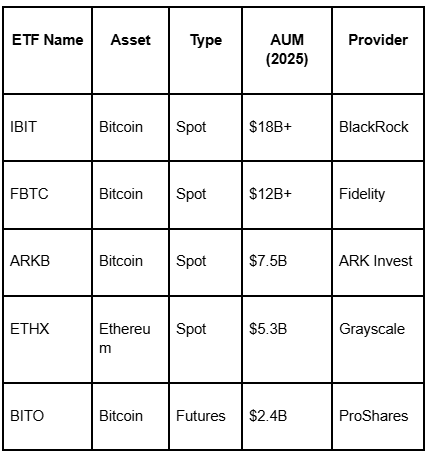
These ETFs are helping investors tap into the gains of crypto markets—without the complexity.
Crypto ETFs represent a pivotal shift in how digital assets are being embraced in traditional finance. They offer accessibility, regulatory clarity, and simplified crypto exposure for everyone from hedge funds to retail investors.
But smart investing goes beyond headlines. Platforms like Token Metrics help you:
In 2025 and beyond, the winning strategy is clear: combine the safety of ETFs with the intelligence of Token Metrics.
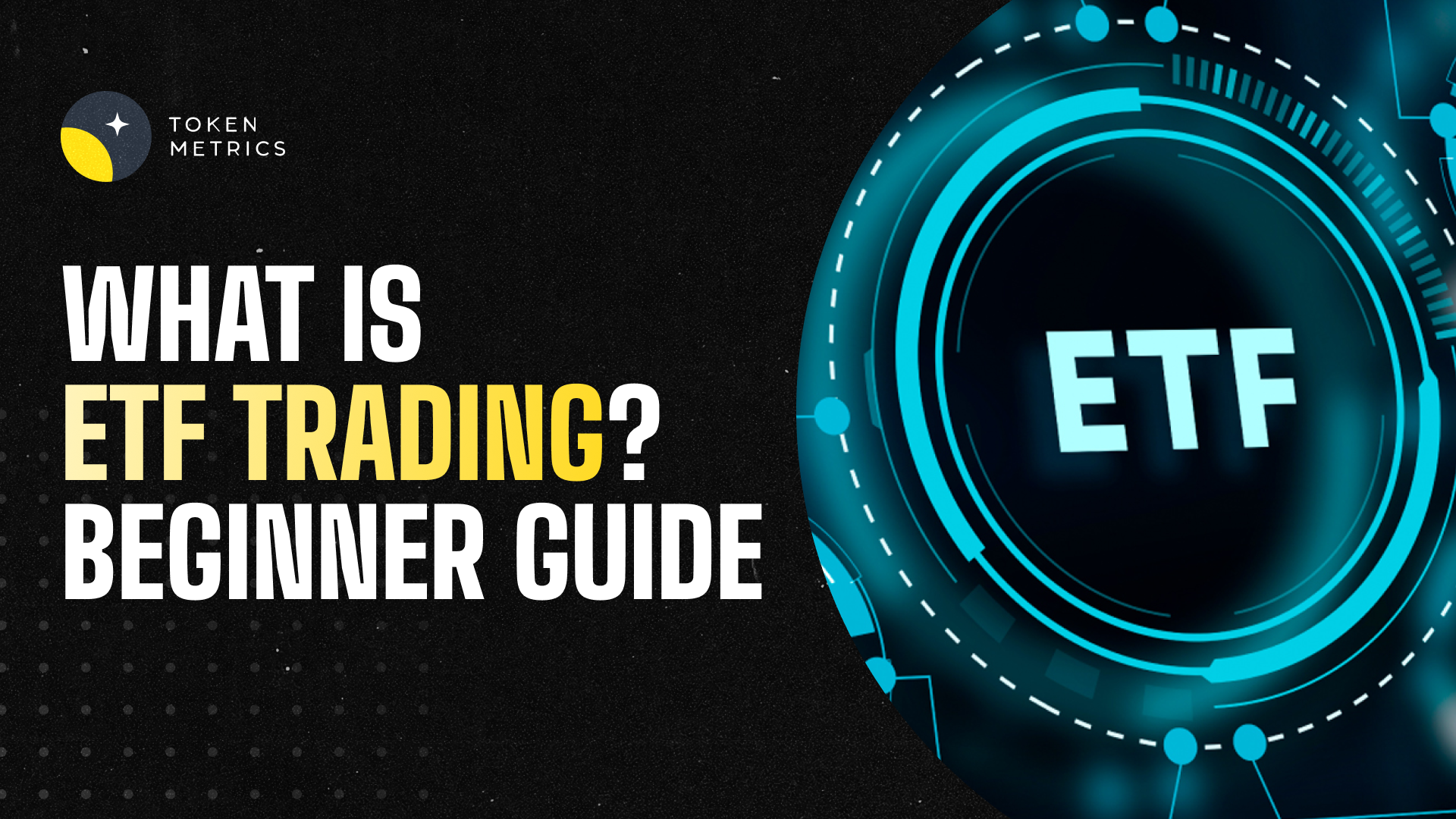
%201.svg)
%201.svg)
In today’s fast-paced financial markets, ETF trading has become one of the most popular and accessible investment strategies. Whether you're a traditional investor or a crypto enthusiast, understanding how ETF trading works can help you make smarter, more diversified investment decisions.
An ETF (Exchange-Traded Fund) is an investment fund that trades on stock exchanges, similar to individual stocks. Each ETF holds a collection of assets, such as:
When you buy a share of an ETF, you're buying a fractional interest in the entire basket of assets. This makes ETFs a powerful tool for diversification, even for beginners.
ETF trading refers to the buying and selling of ETF shares on an exchange—just like you would with Apple or Tesla stock. The value of an ETF changes throughout the trading day, based on the underlying value of its assets.
ETF trading is commonly used for:
You can trade ETFs via your online brokerage, investment app, or even through certain retirement accounts (like IRAs).
Here’s a simplified version of how ETF trading works:
In 2025, crypto ETFs have emerged as one of the fastest-growing segments of the ETF market.
Crypto ETFs allow investors to gain exposure to cryptocurrencies without owning the actual coins. These ETFs are regulated, secure, and accessible through traditional finance platforms.
There are two types:
Example: BlackRock’s iShares Bitcoin Trust (IBIT) is a spot Bitcoin ETF with billions in assets under management (AUM) in 2025.
ETF trading offers unique advantages for both retail and institutional investors:
Instead of buying dozens of individual stocks, ETFs offer broad exposure to sectors, themes, or markets in a single trade.
ETFs trade like stocks—buy or sell at any time during market hours. This makes them more flexible than traditional mutual funds.
Many ETFs have low expense ratios, often under 0.25%. You avoid the high fees associated with actively managed funds.
Trade ETFs using any brokerage account. You don’t need to be an accredited investor or a crypto expert.
ETFs are generally more tax-efficient than mutual funds due to the in-kind creation/redemption process.
ETF trading, like all investing, carries risks:
ETF prices can go up or down depending on market conditions.
Not all ETFs are highly traded. Low volume can lead to wide bid/ask spreads and slippage.
Some ETFs fail to perfectly mirror their benchmark, especially futures-based crypto ETFs.
Thematic ETFs (e.g., blockchain, AI) can be highly concentrated and volatile.
Whether you're trading traditional ETFs or crypto-focused ones, Token Metrics provides AI-powered tools to help you trade with confidence.
Token Metrics offers AI-generated bullish/bearish signals for Bitcoin, Ethereum, and other assets—helping you identify the best time to enter or exit.

The platform generates short- and long-term price forecasts, using 80+ data points. This can help you anticipate ETF price movements, especially for crypto ETFs.
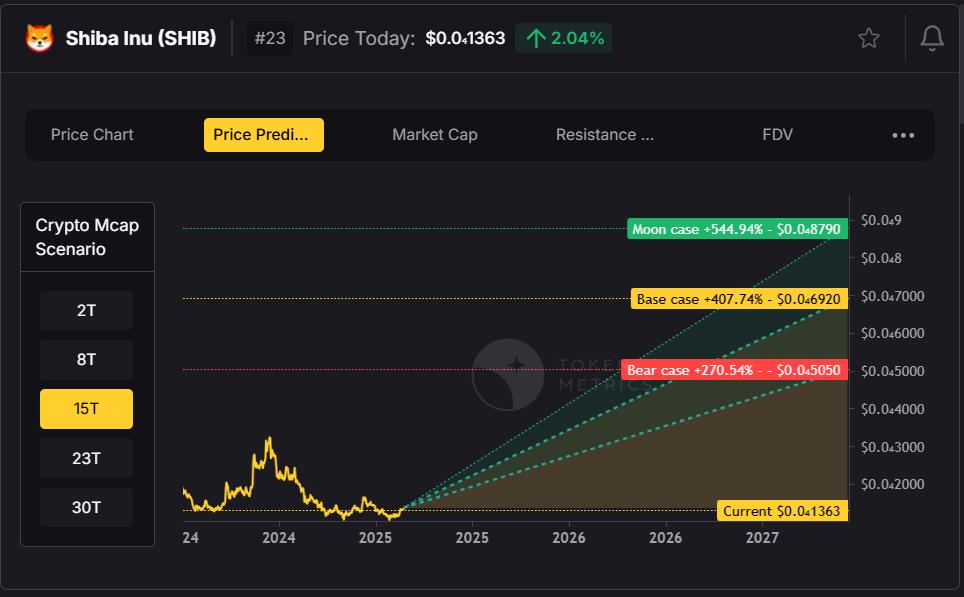
Token Metrics tracks exchange reserves, ETF inflows, and blockchain metrics—giving traders a unique edge not available on traditional brokerage platforms.
Set up alerts based on trader grades, investor grades, and signal changes to react to market moves instantly.

Let’s say you want to trade the BlackRock Bitcoin ETF in July 2025. Here’s how Token Metrics can help:
This combination of real-time AI alerts + institutional trend analysis gives you a significant advantage over traditional investors.
ETF trading has changed the game for investors. Whether you're looking to diversify your portfolio, gain exposure to crypto, or automate your trading strategy—ETFs provide a flexible, affordable, and efficient solution.
And in 2025, combining ETF trading with Token Metrics' AI-powered platform is one of the smartest ways to stay ahead.
With features like real-time signals, crypto ETF tracking, price predictions, and custom alerts, Token Metrics transforms how you approach modern ETF markets.
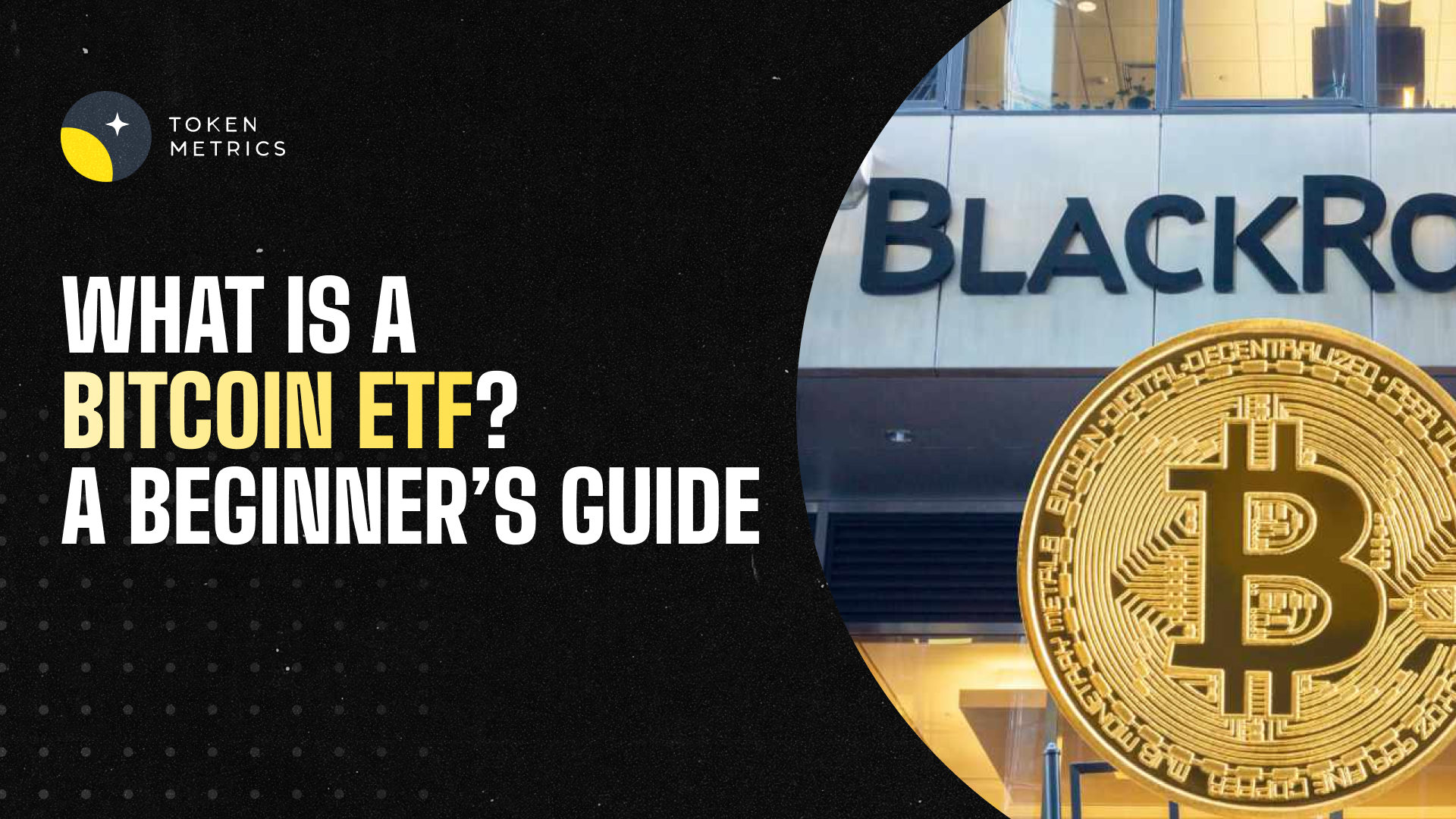
%201.svg)
%201.svg)
The cryptocurrency world continues to evolve rapidly, and one of the most significant milestones in recent years has been the approval and rise of Bitcoin ETFs. If you’ve ever wondered, “What is a Bitcoin ETF and why is it important?” — this guide breaks it down in simple terms.
In this highly informative blog, we’ll explore:
A Bitcoin ETF (Exchange-Traded Fund) is a financial product that allows investors to gain exposure to the price movements of Bitcoin without having to own or manage actual Bitcoin.
Just like buying a stock, investors can purchase shares of a Bitcoin ETF through traditional brokerage accounts. These shares represent ownership in a fund that tracks the price of Bitcoin.
In essence, a Bitcoin ETF bridges the gap between traditional finance and crypto investing.
Bitcoin ETFs are created and managed by large financial institutions or asset managers. These funds:
These shares are then listed on stock exchanges like the NYSE, Nasdaq, or CBOE, where they can be bought or sold just like regular stocks.
There are two main types of Bitcoin ETFs:
In 2025, spot ETFs are considered superior due to their more accurate and direct exposure.
Bitcoin ETFs offer several key advantages:
Investors can buy Bitcoin exposure through traditional brokerage platforms like Fidelity, Schwab, or Robinhood—no need for crypto wallets or private keys.
ETFs are regulated by institutions like the SEC and are managed by trusted financial firms, offering greater transparency and investor protection.
Buying and selling ETFs may provide more favorable tax treatment compared to transacting in physical Bitcoin directly.
Bitcoin ETFs enable pension funds, hedge funds, and banks to legally and easily gain exposure to BTC. Inflows from these entities have driven billions into Bitcoin in 2024 and 2025.
Despite their benefits, Bitcoin ETFs come with a few risks:
Futures ETFs may deviate from Bitcoin’s spot price due to volatility and contract rollover costs.
ETF providers charge an annual fee (0.20%–1.00%), which can reduce long-term returns.
You don’t actually own Bitcoin when you hold an ETF—so you can’t transfer it or use it for DeFi or crypto payments.
Bitcoin remains a highly volatile asset. ETF shares may still experience massive price swings.
The approval and adoption of Bitcoin ETFs mark a turning point in mainstream crypto acceptance. Here’s why:
While traditional investors focus on ETF tickers, smart crypto investors turn to platforms like Token Metrics to get deeper insights.
Token Metrics uses machine learning to predict short- and long-term Bitcoin price trends. As of June 28, the AI turned bullish, signaling BTC's breakout past $110,000.

The platform tracks Bitcoin’s exchange reserves, showing a drop from 3.25M to 2.55M BTC—a bullish signal due to reduced sell-side pressure.

Token Metrics integrates on-chain data and fund inflows to measure:
You can set up custom price alerts for Bitcoin and receive Trader and Investor Grades based on 80+ real-time metrics.

These tools allow you to react faster than ETF investors relying on traditional media or quarterly reports.
As of July 2025:
A Bitcoin ETF is one of the easiest ways to gain exposure to Bitcoin in 2025. Whether you’re a traditional investor looking to diversify or a crypto-native looking for a regulated option, ETFs offer accessibility, safety, and legitimacy.
But don’t stop at just buying shares—pair your ETF exposure with real-time intelligence from Token Metrics.
With institutional momentum accelerating, regulatory clarity improving, and AI tools like Token Metrics giving you an edge, there’s never been a better time to understand and invest in Bitcoin ETFs.
.png)
%201.svg)
%201.svg)
As cryptocurrency adoption accelerates globally in 2025, one critical question for both beginners and experienced investors is: Where should you store your crypto assets safely?
The answer lies in understanding the difference between hot wallets and cold wallets — the two main categories of cryptocurrency storage. This highly informative and SEO-optimized blog will help you understand:
A crypto wallet stores your private and public keys, enabling you to send, receive, and manage digital assets like Bitcoin, Ethereum, or altcoins. Unlike traditional bank accounts, crypto wallets give you full control over your funds — but with that control comes the responsibility of securing them.
Wallets are typically categorized as:
A hot wallet is a crypto wallet that is connected to the internet. It’s designed for easy access and quick transactions, making it ideal for active traders and everyday use.
Hot wallets are often recommended for storing smaller amounts of crypto for daily use.
A cold wallet refers to any crypto wallet that is not connected to the internet. It’s a form of offline storage designed for maximum security.
Cold wallets are ideal for long-term investors storing large amounts of crypto.
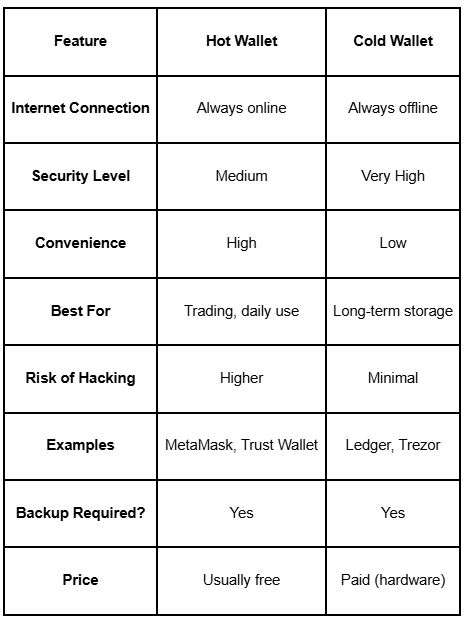
Many crypto investors in 2025 use a dual-wallet strategy:
This balances convenience and security while minimizing exposure to threats.
For example:
Token Metrics supports:
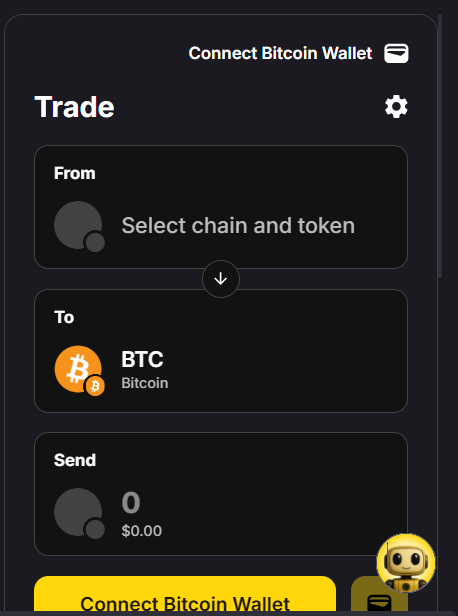
Token Metrics helps reduce the need to frequently move funds by:

For early-stage altcoins, timing is everything. Token Metrics lets you:

If you’re using a hot wallet:
Always back up your seed phrase and store it securely offline.
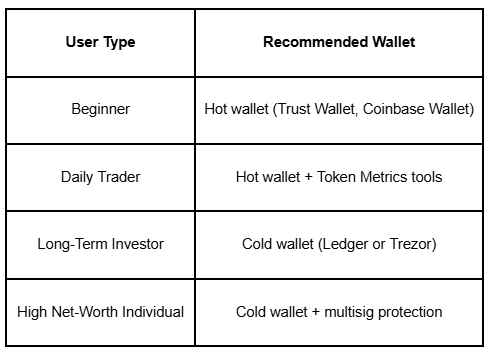
Whether you’re storing $100 or $100,000 in cryptocurrency, your wallet choice directly impacts your security, accessibility, and peace of mind.
In 2025, don’t just store your crypto—store it wisely. Combine hot and cold wallet strategies and leverage tools like Token Metrics to build a secure, intelligent crypto portfolio.
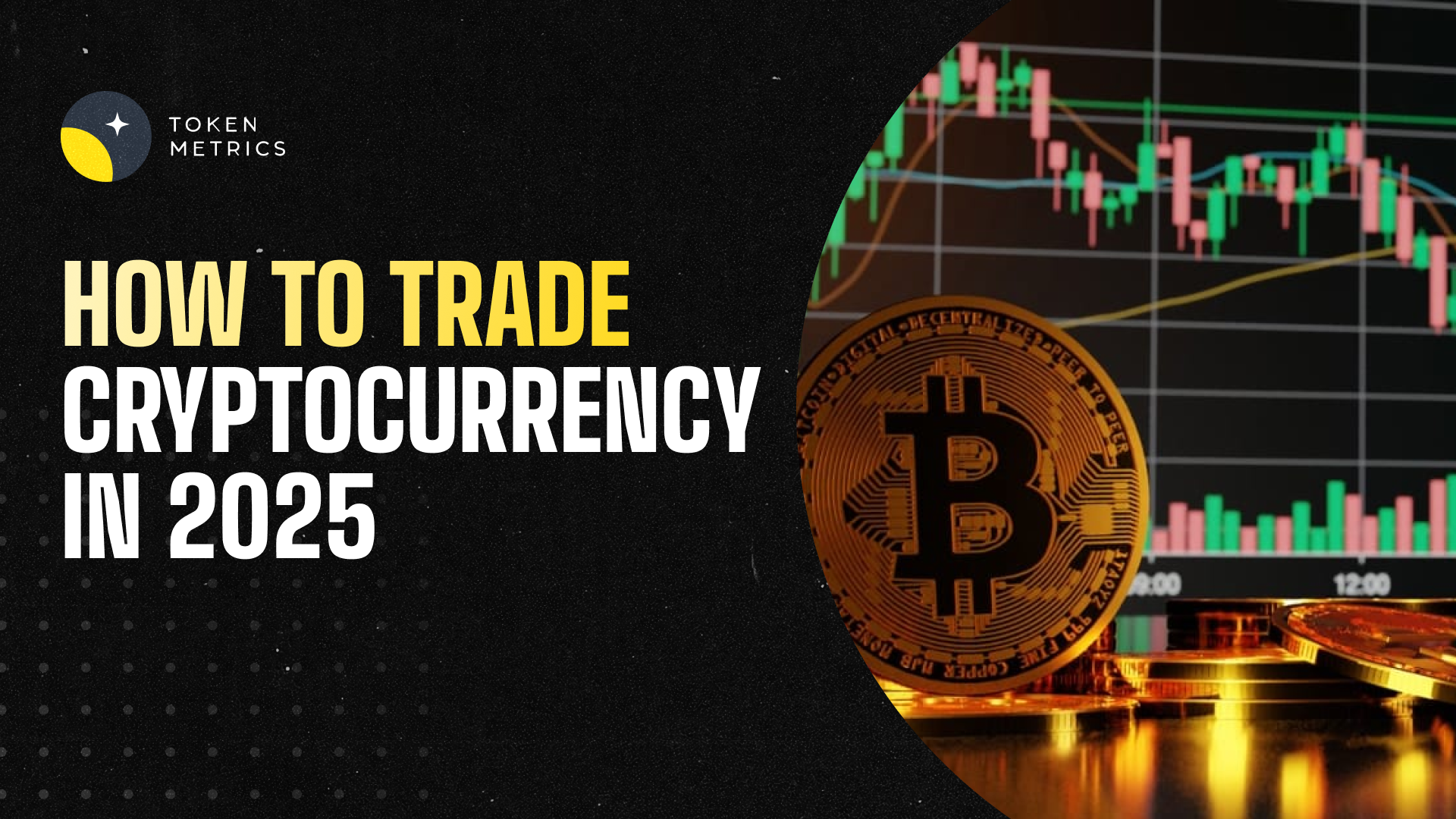
%201.svg)
%201.svg)
Cryptocurrency trading has rapidly evolved into a global financial movement. With the rise of decentralized finance (DeFi), institutional adoption, and advanced AI tools, trading crypto in 2025 is more accessible—and more profitable—than ever before. But with great opportunity comes great risk, especially if you trade without strategy or insights.
In this highly informative beginner’s guide, we’ll break down how to trade cryptocurrency step by step, the different types of trading strategies, and how platforms like Token Metrics help you make smarter, AI-powered decisions.
Cryptocurrency trading involves buying and selling digital assets like Bitcoin (BTC), Ethereum (ETH), Solana (SOL), or thousands of other tokens to profit from price fluctuations. Traders analyze price movements, market trends, and use technical or fundamental data to time their entries and exits.
Unlike traditional stock markets, crypto markets are:
Understanding the different styles of trading can help you pick a strategy that fits your goals and risk tolerance.
Select a reputable platform to execute trades. Popular choices in 2025 include:
Each platform offers different tools, liquidity, and trading pairs.
Deposit funds using:
Token Metrics integrates wallet access, swap functionality, and DeFi bridges so you can trade directly from your dashboard.
Before you trade, analyze:

🔹 Token Metrics AI Grades:

These AI-generated scores help you find the most promising tokens, instantly filtering thousands of coins by risk and opportunity.
Choose your trading pair (e.g., BTC/USDT), then:

Token Metrics provides real-time buy/sell alerts powered by AI signals, helping you avoid emotional trading.
Check the performance of your portfolio regularly. Use tools like:
Token Metrics simplifies this with its Token Details Page, offering everything from real-time ROI to whale tracking—all in one view.
Sell your position when:
You can transfer funds to a cold wallet or reinvest into new high-potential tokens (like those listed in the Moonshots tab on Token Metrics).
Trading is hard. But with Token Metrics AI tools, you can trade based on data, not emotions.



Alerts are sent via:
Trade directly on Token Metrics with one click. No need to leave the platform.
Platforms like Token Metrics sit at the center of these trends, offering users powerful AI infrastructure and deep crypto analytics.
Trading cryptocurrency in 2025 is more rewarding—and more competitive—than ever. To succeed, you need:
That’s where Token Metrics comes in.
Whether you’re day trading, swing trading, or investing long-term, Token Metrics gives you:
Don’t just trade crypto—trade with intelligence.


 Create Your Free Account
Create Your Free Account9450 SW Gemini Dr
PMB 59348
Beaverton, Oregon 97008-7105 US
.svg)




.png)
Token Metrics Media LLC is a regular publication of information, analysis, and commentary focused especially on blockchain technology and business, cryptocurrency, blockchain-based tokens, market trends, and trading strategies.
Token Metrics Media LLC does not provide individually tailored investment advice and does not take a subscriber’s or anyone’s personal circumstances into consideration when discussing investments; nor is Token Metrics Advisers LLC registered as an investment adviser or broker-dealer in any jurisdiction.
Information contained herein is not an offer or solicitation to buy, hold, or sell any security. The Token Metrics team has advised and invested in many blockchain companies. A complete list of their advisory roles and current holdings can be viewed here: https://tokenmetrics.com/disclosures.html/
Token Metrics Media LLC relies on information from various sources believed to be reliable, including clients and third parties, but cannot guarantee the accuracy and completeness of that information. Additionally, Token Metrics Media LLC does not provide tax advice, and investors are encouraged to consult with their personal tax advisors.
All investing involves risk, including the possible loss of money you invest, and past performance does not guarantee future performance. Ratings and price predictions are provided for informational and illustrative purposes, and may not reflect actual future performance.



